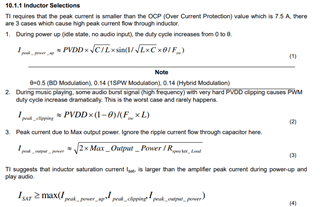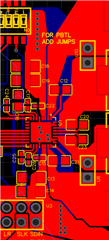Hello there,
I have successfully integrated the TAS5825M into several designs, but am starting on a new design with some different requirements and thought it would be wise to request a schematic and layout review prior to starting the prototyping. I have attached my Schematics and layout below, but in particular I have a few questions:
1. I have utilized a set of 4 DIP switches to change address between the 4 options. Do you see any issue with that?
2. To be able to switch between PTBL and stereo, I have added headers between the +/- output pours for jumping/unjumping. Are there any reasons why this would cause issues in audio quality or damage the IC?
3. Instead of using a string of vias to connect the PVDD on each side of the amp, I used a pour on the top layer to connect the two sets of PVDD pins. Will this be okay?
Thank you so much for your consideration! I would have posted to the main forums, but for some reason even with my company email the system would not let me post.
Best,
Peter




